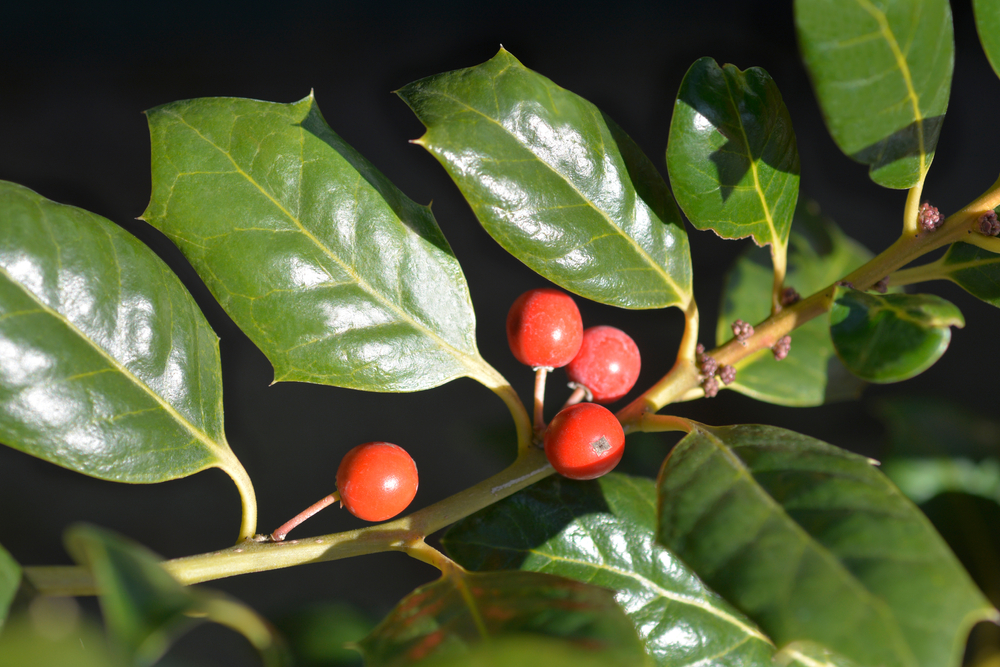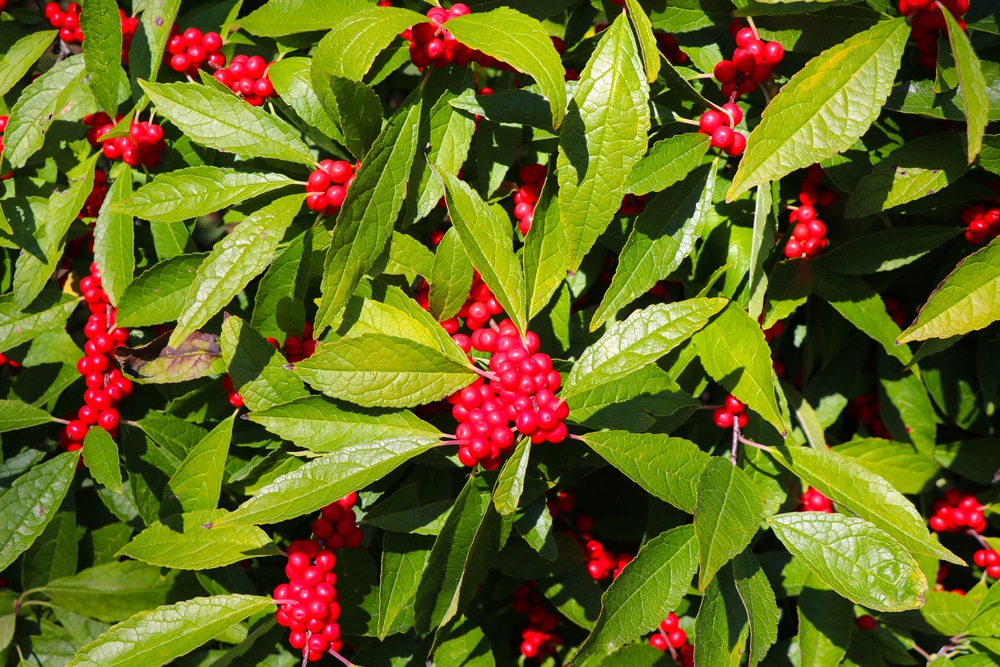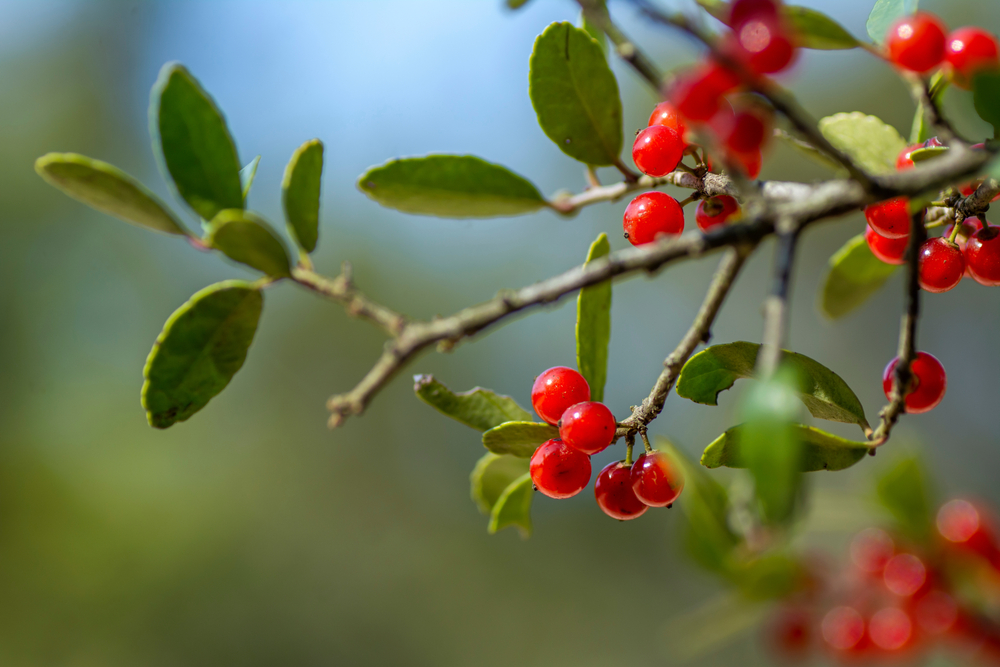If you love holly trees and live in Texas, you’re in luck! There are several different holly tree species that you can grow in the Lone Star State. In this article, we’ll list some of the most popular types of holly trees in Texas.
Types of Holly Trees in Texas
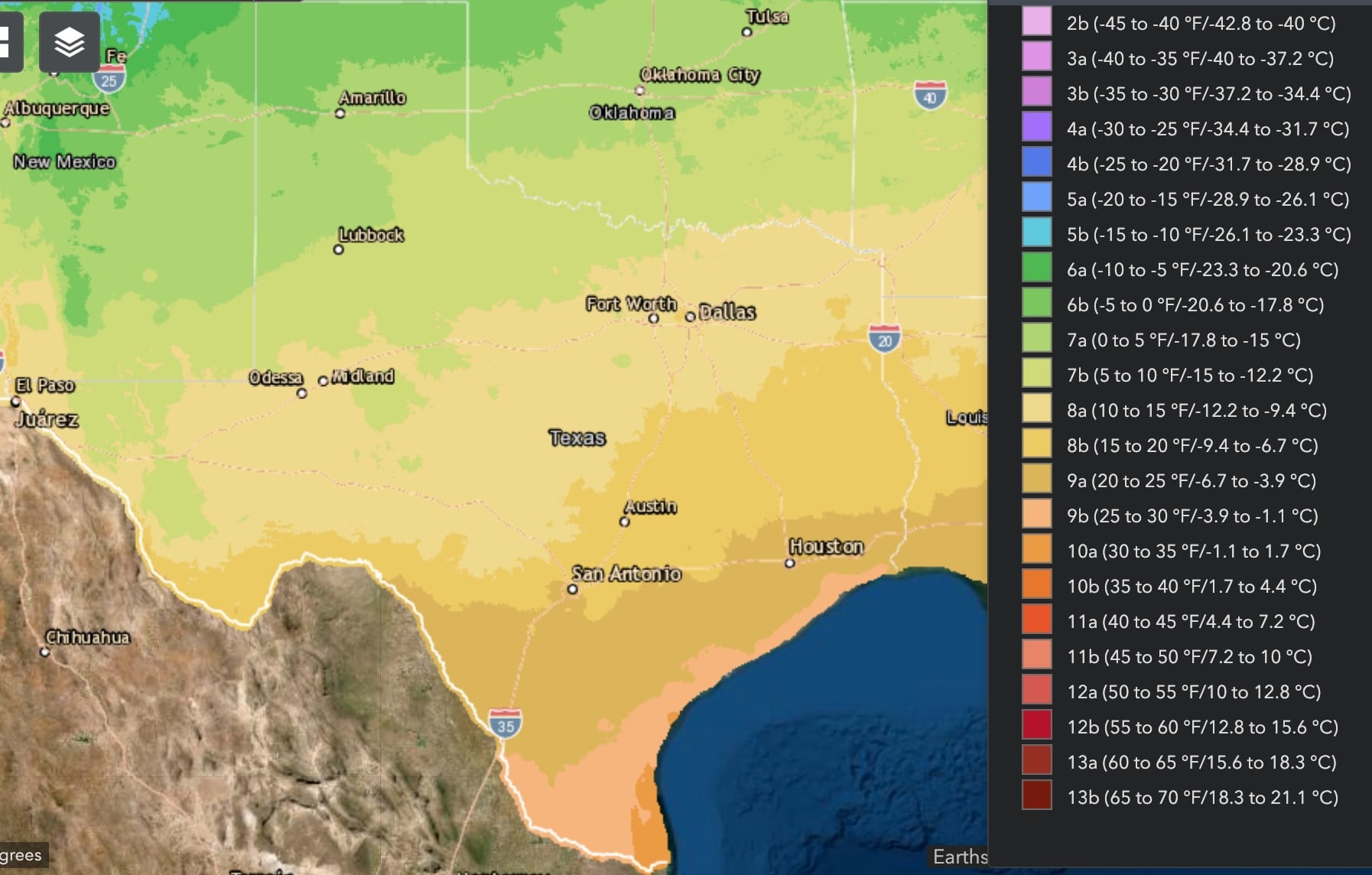
Here are four common holly tree varieties that grow well in Texas:
American Holly
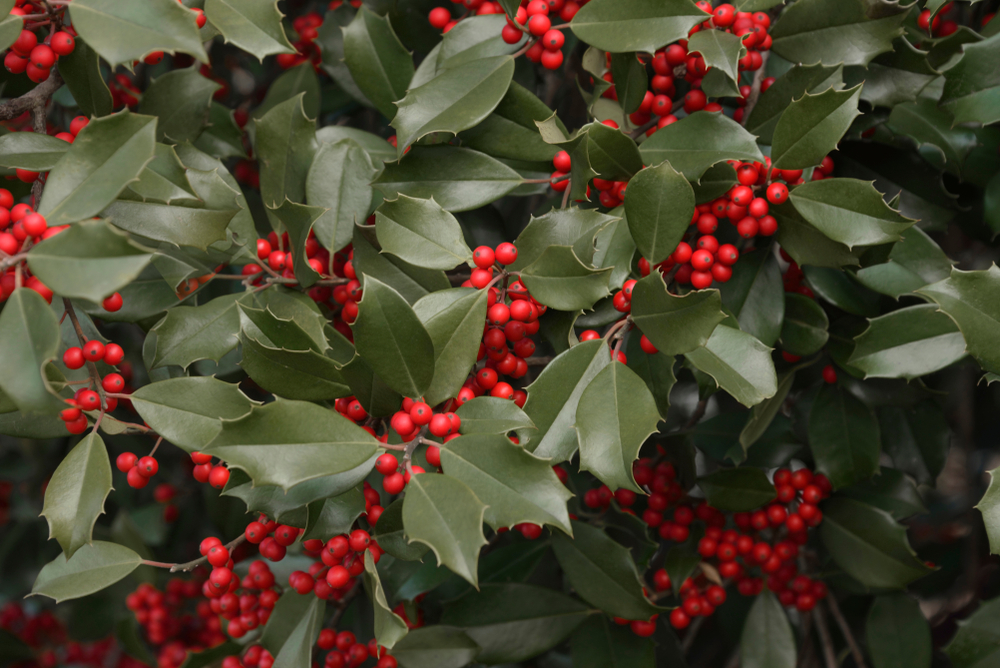
USDA Plant Hardiness Zone: Zone 5
American holly is especially likely to do well on your property if you live in East Texas. Just make sure your soil is moist, rich, and acidic. In most cases, an American holly will grow to between 25 and 30 feet. However, there have been rare instances when this tree has reached 60 feet.
The American holly also grows quite wide, getting as broad as 15 and 20 feet across.
If you have a female tree, you’ll see it grow berries with a delightfully bright red color. But they only grow these berries if a male is in the vicinity, so you’ll want to plant one of those, too.
Once your American holly has matured, it should take an oval shape. But be prepared to have more of a pyramid shape when it’s young.
The American holly needs partial sun, and it blooms in the spring. You must regularly water your American holly tree. This evergreen tree has medium to high watering requirements.
Stevens Holly (Nellie R. Stevens Holly)
USDA Plant Hardiness Zones: Zones 6-9
Nellie R. Stevens Holly (often referred to as Stevens Holly) has lovely dark green leaves and is an evergreen plant. Many Texas homeowners enjoy planting Stevens Holly as a privacy shield for their property.
This holly is excellent at withstanding drought, and deer are unlikely to eat it. It grows all year long and grows red decorative fruit. One of the most wonderful things about Stevens Holly is its leaves stay glossy all year.
You can plant this holly in partial or full sun. You should ensure the soil is a bit acidic and well-drained if you want the Stevens Holly to thrive. However, it can usually also survive in soil that is a bit alkaline and in various types of soil, such as dry sand and heavy clay.
You shouldn’t get too carried away with the Stevens Holly when watering. Give this tree approximately an inch of water weekly in the spring and summer months. Stevens Holly is low-maintenance in that it doesn’t require watering in the cooler months.
Winterberry Holly
USDA Plant Hardiness Zones: Zones 3-9
Winterberry holly is another holly tree that you can grow in Texas. But you probably don’t want to include this plant on your property if you have pets. It’s poisonous to cats and dogs. It’s also toxic to human beings, so be cautious if you have kids.
Despite its name, the Winterberry holly blooms in June with flowers that have a distinctive greenish-white color. If you want to plant Winterberry holly, make sure the soil is acidic. The pH can range between 5.5 and 6.5.
The soil should be well-drained yet moist. Give this tree partial or full sun. When the winterberry holly is mature, you can expect it to stand between 3 and 15 feet tall. It’s a wide plant, too, growing to as broad as 3 to 15 feet.
This holly tree is classified as a deciduous shrub. Gardeners refer to it by a variety of names, including winterberry, holly berry, and winter holly berry.
Pride of Houston Yaupon Holly
USDA Plant Hardiness Zones: Zones 7-10
Pride of Houston Yaupon Holly is a drought-tolerant holly tree. It’s an evergreen plant, and you should give it partial to full sun. You can expect this tree to grow between 15 and 20 feet high. If you want to attract more birds, butterflies, and bees to your property, the Pride of Houston Yaupon Holly is a great addition.
You can expect your Pride of Houston Yaupon Holly to bloom in mid-spring. The blooms tend to be white. There’s a good reason this plant is called “Pride of Houston.” It’s extremely popular for planting in Houston, Texas. Other places in the country where gardeners plant include Knoxville, Tennessee, Oklahoma City, Oklahoma, and Trenton, Florida.
Final Thoughts
Now you know about holly trees that you can grow in Texas. While the plants we listed here are the most popular, there are several others to choose from. If you’d like to include holly trees on your Texas property, take your time choosing the right ones for you. You’ll need to ensure your holly trees are planted with the correct spacing and are well cared for.
